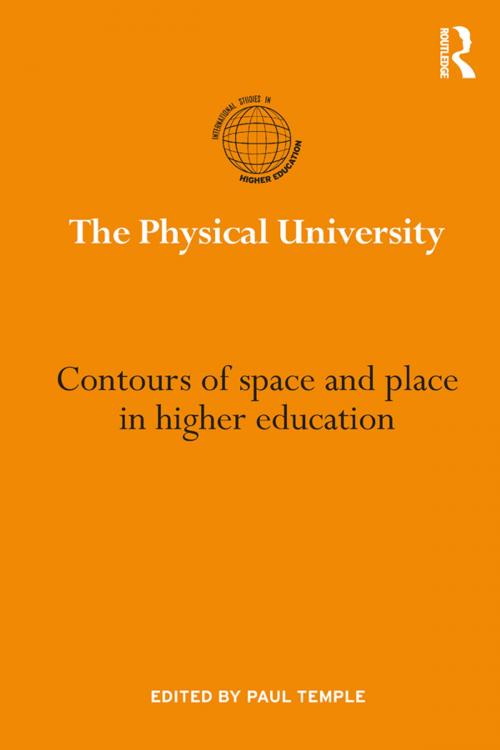The Physical University
Contours of space and place in higher education
Nonfiction, Reference & Language, Education & Teaching, Higher Education, Administration| Author: | ISBN: | 9781317802518 | |
| Publisher: | Taylor and Francis | Publication: | March 21, 2014 |
| Imprint: | Routledge | Language: | English |
| Author: | |
| ISBN: | 9781317802518 |
| Publisher: | Taylor and Francis |
| Publication: | March 21, 2014 |
| Imprint: | Routledge |
| Language: | English |
The great universities of the world are to a large extent defined in the public imagination by their physical form: when people think of a university, they usually think of a distinctive place, rather than about say the teaching or the research that might go on there. This is understandable, both because universities usually stay rooted to the same spot over the centuries; and because their physical forms may send powerful messages about the kind of places they are.
The physical form of the university, and how the spaces within it become transformed by their users into places which hold meanings for them, has become of increased interest recently from both academic and institutional management perspectives, when trying to understand more about how universities work, and how they may be made more effective. Yet, despite its seemingly obvious importance, the available literature on space and place in higher education internationally is scant when compared to that dealing with, say, teaching and learning methods, or with evaluating quality, or many other topics.
This book brings together a range of academic and professional perspectives on university spaces and places, and show how technical matters of building design, maintenance and use interact with academic considerations on the goals of the university. Space issues are located at an intellectual crossroads, where widely differing conceptual and professional perspectives meet, and need to be integrated and this important book brings together perspectives from around the world to show design and use issues are changing Higher Education..
Globally, higher education is being required to do more things – to teach more students, to be better at research, to engage more with business and communities; and many other things. These pressures are leading universities to reconsider their management processes, as well as their academic structures: an often-quoted saying is that "we make our buildings, and afterwards they make us". At a time when universities and colleges are seeking competitive advantages, ideas and analysis about space design and use is much needed and will be well-received.
The great universities of the world are to a large extent defined in the public imagination by their physical form: when people think of a university, they usually think of a distinctive place, rather than about say the teaching or the research that might go on there. This is understandable, both because universities usually stay rooted to the same spot over the centuries; and because their physical forms may send powerful messages about the kind of places they are.
The physical form of the university, and how the spaces within it become transformed by their users into places which hold meanings for them, has become of increased interest recently from both academic and institutional management perspectives, when trying to understand more about how universities work, and how they may be made more effective. Yet, despite its seemingly obvious importance, the available literature on space and place in higher education internationally is scant when compared to that dealing with, say, teaching and learning methods, or with evaluating quality, or many other topics.
This book brings together a range of academic and professional perspectives on university spaces and places, and show how technical matters of building design, maintenance and use interact with academic considerations on the goals of the university. Space issues are located at an intellectual crossroads, where widely differing conceptual and professional perspectives meet, and need to be integrated and this important book brings together perspectives from around the world to show design and use issues are changing Higher Education..
Globally, higher education is being required to do more things – to teach more students, to be better at research, to engage more with business and communities; and many other things. These pressures are leading universities to reconsider their management processes, as well as their academic structures: an often-quoted saying is that "we make our buildings, and afterwards they make us". At a time when universities and colleges are seeking competitive advantages, ideas and analysis about space design and use is much needed and will be well-received.















